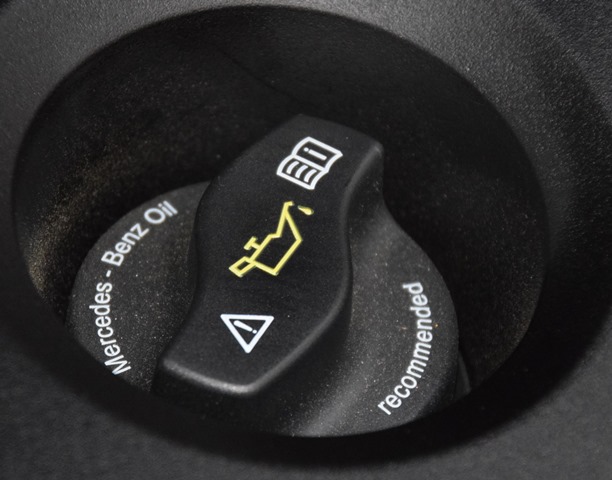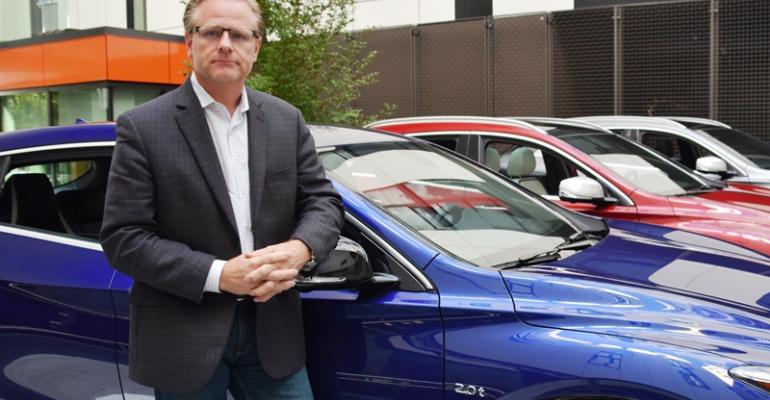SEATTLE – Peek under the hood of the all-new Infiniti QX30 compact CUV, and the oil cap atop the 2.0L turbocharged 4-cyl. engine recommends owners use Mercedes-Benz lubricant when necessary.
Casual consumers might find this odd, but Mercedes designed and built in Germany the engine under the hood of Infiniti’s newest model. In fact, the QX30 shares its architectural underpinnings with the Mercedes GLA CUV and CLA sedan.
Infiniti tuned the engine for its use in the QX30, stamps its own sheet metal and designed the interior. The QX30 is one of the first Infiniti vehicles built at parent company Nissan’s plant in Sunderland, U.K.

This is the reality of platform sharing and modern-day badge engineering: Fiat’s ’17 124 Spider roadster is a modified Mazda MX-5 Miata; the Chevrolet City Express cargo van is akin to the Nissan NV200; the Scion iA (soon to be rebranded a Toyota) is a modestly tweaked Mazda2; the Subaru BRZ and ’17 Toyota 86 (formerly Scion FR-S) basically are the same.
In the case of the QX30, it appears Mercedes’ parent Daimler is doing the heavy lifting and gets little in return from the Renault-Nissan Alliance. But this is a long-term partnership founded six years ago, and an Infiniti executive says his company will carry its weight in many ways.
For instance, at its plant in Decherd, TN, Nissan produces 4-cyl. Mercedes engines used by both Daimler and the Renault-Nissan Alliance. Both automakers also have broken ground on a new plant in Aguascalientes, Mexico, that is opening next year and expected to produce more than 230,000 vehicles annually by 2020.
WardsAuto’s Global Production Forecast says the first vehicle coming from the plant will be the Infiniti QX50 CUV in November 2017, followed by the Mercedes short-wheelbase A-Class sedan in July 2018 and the Mercedes GLB utility vehicle in May 2019.
“There’s a lot of intellectual capital sharing,” Keith St. Clair, director-product planning for Infiniti Americas, tells WardsAuto here during the QX30 media launch.
“There are a lot of things Nissan as a company has to offer Daimler, and it’s not just capital expansions. There’s a huge interest in doing that,” he says.
Although it competes directly with the Mercedes GLA, St. Clair sees the QX30 as an excellent opportunity for Infiniti to cost-effectively enter the growing compact luxury CUV segment.
“With this particular product, it made sense not to just share ideas and maybe plants and componentry,” St. Clair says. “It made sense to go one step further and co-develop a vehicle together to see if it made sense. This car was the right point in time to do that.”
On the powertrain-sharing front, Nissan in Decherd builds 2.0L turbo-4 engines for rear-wheel-drive applications, including the Infiniti Q50 and Mercedes C-Class (being made in Alabama), while Mercedes in Germany builds the same engines for transverse front-wheel-drive vehicles, such as the GLA and QX30.
The QX30 interior definitely has a unique look and feel, although the TFT display screen in the gauge cluster is borrowed from Mercedes, carrying over the German automaker’s font and graphics.
More Sharing to Come, But Not VR V-6
“You’ll see some of the architectural elements you might see in a GLA, but that interior was designed by us,” St. Clair says. “Also, the components we share with Daimler, we modified them and tuned them to fit our own expression.”
He views the jointly developed vehicles and Mexican plant collaboration as significant. “Those in itself are massive steps forward.”

As for future products, Daimler has said it will introduce a Mercedes pickup truck sharing some of its architecture with the Nissan NP300 Navara (Frontier in North America) by the end of the decade, built by Nissan in the Renault plant in Cordoba, Argentina.
Daimler’s new Smart Fortwo and Forfour share a common platform with the Renault Twingo, and EV versions of the Smart cars soon to be on sale will use electric motors produced by Renault’s Cléon plant in France.
St. Clair declines to say much more about future products to be shared. “But we don’t intend to do just one.”
Something that appears to be off the table for sharing with Daimler are Infiniti’s new 3.0L twin-turbo “VR” V-6 engines, one rated at 300 hp and the other at 400 hp, now available in the Q50 sedan and soon-to-launch Q60 coupe.
“We’ve made no announcements about sharing those powertrains outside the Infiniti family,” St. Clair says of the engine family expected eventually to replace the heralded VQ V-6 used extensively for years.
Until now, most Infiniti CUVs have been front-wheel drive, powered by naturally aspirated VQs. But St. Clair says he would like to see the two new turbo V-6s available in future utes, perhaps some of them with rear-wheel drive.
“You’ll see a new alignment, a new arrangement of utility vehicles coming to market from Infiniti,” he says. “And as you can guess, they will be front-drivers. But there’s always room for rear-drivers as well.”





